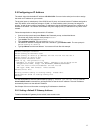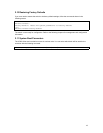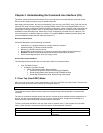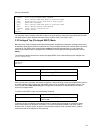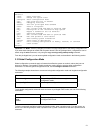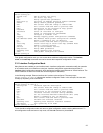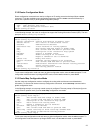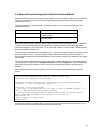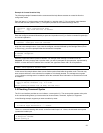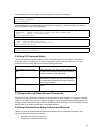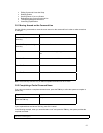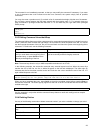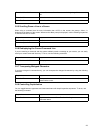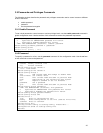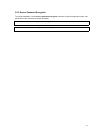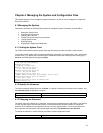
25
Example of Context Sensitive Help
The following example illustrates how the context-sensitive help feature creates an access list from the
configuration mode.
Enter the letters “co” at the system prompt followed by a question mark (?). Do not leave a space between
the last letter and the question mark (?). The system provides the commands that begin with co.
Router# co?
configure Enter configuration mode
copy Copy from one file to another
Router# co
Enter the configure command followed by a space and a question mark (?) to list the command's keyword(s)
and a brief explanation:
Router# configure ?
terminal Configure from the terminal
Note that in the example below, if you enter the configure command followed by the Carriage Return (Enter
or Return key), you will be prompted that the command is incomplete.
Router# configure
% Command incomplete.
Router#
Generally, uppercase letters represent variables. For example, after entering a command, such as
hostname, and using a space and a question mark, you will be prompted for the new name, represented by
WORD. In cases where an IP address is the variable, the uppercase letters A.B.C.D will represent it.
Router(config)# hostname ?
WORD This system's network name
In this access list example below, there are two further options listed after the question mark. The user may
enter a source wildcard, or the command is complete as it is already entered. The carriage return symbol
(<cr>) indicates a carriage return is needed to enter the command. More information on access lists is found
in Chapter 5.
Router(config)# access-list 99 deny 192.168.123.0 ?
A.B.C.D Source wildcard. e.g. 0.0.0.255
<cr>
Router(config)# access-list 99 deny 192.168.123.0
3.5 Checking Command Syntax
The CLI user interface provides an error indicator, a caret symbol (^). The caret symbol appears at the point
in the command string where you have entered an incorrect letter, command, keyword, or argument.
In the following example, suppose you want to enable rip router:
Router(config)# routed rip
^
% Invalid input detected at '^' marker.
There is no command starting with routed, so the first invalid input is ‘d’. Hence, the indicated caret symbol
(^)marks the invalid input.
Router(config)# route
% Ambiguous command.
Router(config)#



